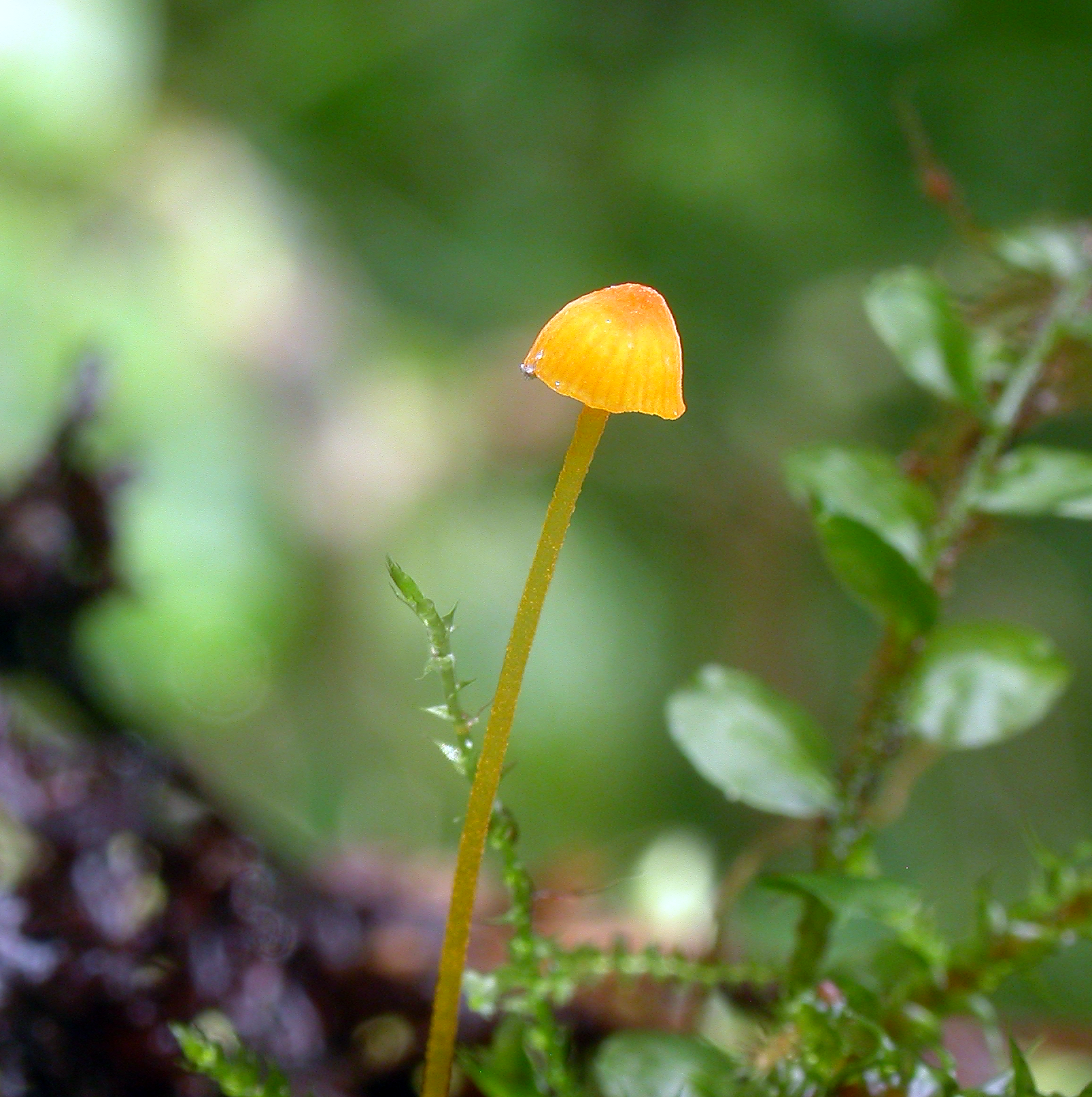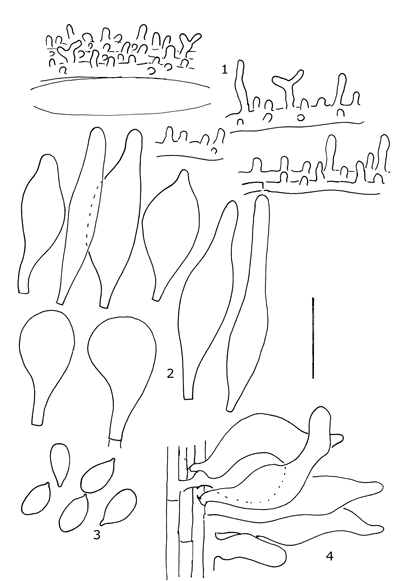Mycena oregonensis
Mycena oregonensis
Description
1. Hyphae of the pileipellis, 2. Cheilocystidia, 3. Spores, 4. Caulocystidia.
Cap 2-10 mm across, conical to campanulate or parabolical, becoming convex with age, often with a small papilla, translucent-striate, hygrophanous, delicately pruinose, glabrescent, bright orange with yellow shades, more yellow with age, but with orange centre. Gills 7-10 reaching the stem, broadly adnate, decurrent with a tooth, pale yellow or whitish with bright yellow edge. Stem 15-60 x 0.3-0.5 mm, fragile, cylindrical, entirely puberulous, glabrescent except for the apex, orange, more brightly coloured at the apex, attached to the substratum by radiating, fine, yellow to yellowish-white fibrils. Odour none. Basidia 22-28 x 5-6 µm, clavate, 2-spored. Spores 6.6-9.8 x 3.3-5.5 µm, Q = 1.6-2.3, Qav ˜ 1.9-2, pip-shaped, non-amyloid. Cheilocystidia 20-68 x 7-17 µm, fusiform, lageniform, utriform, subcylindrical or clavate, with broadly rounded apex, smooth, sometimes with one or two outgrowths, with yellow contents. Pleurocystidia similar, not frequent. Lamellar trama non-dextrinoid. Hyphae of the pileipellis 2-8 µm wide, covered with simple to furcate, cylindrical, fairly coarse excrescences 2- 15 x 1-4 µm, sometimes the excrescences are cystidia-like, fusiform to lageniform, up to 40 x 8 µm, terminal cells smooth to diverticulate. Hyphae of the cortical layer of the stem 2-3 µm wide, smooth, terminal cells (caulocystidia) numerous, in tufts, 13-70 x 7-22.5 µm, globose, ellipsoid, fusiform or subcylindrical, with yellow contents. Clamps absent.
Ecology and distribution
Growing on fallen needles, small twigs and cones, or in moss under Picea, often in fairly wet, fern rich places. Also found among fallen leaves under Alnus. Summer to autumn. Rare.


